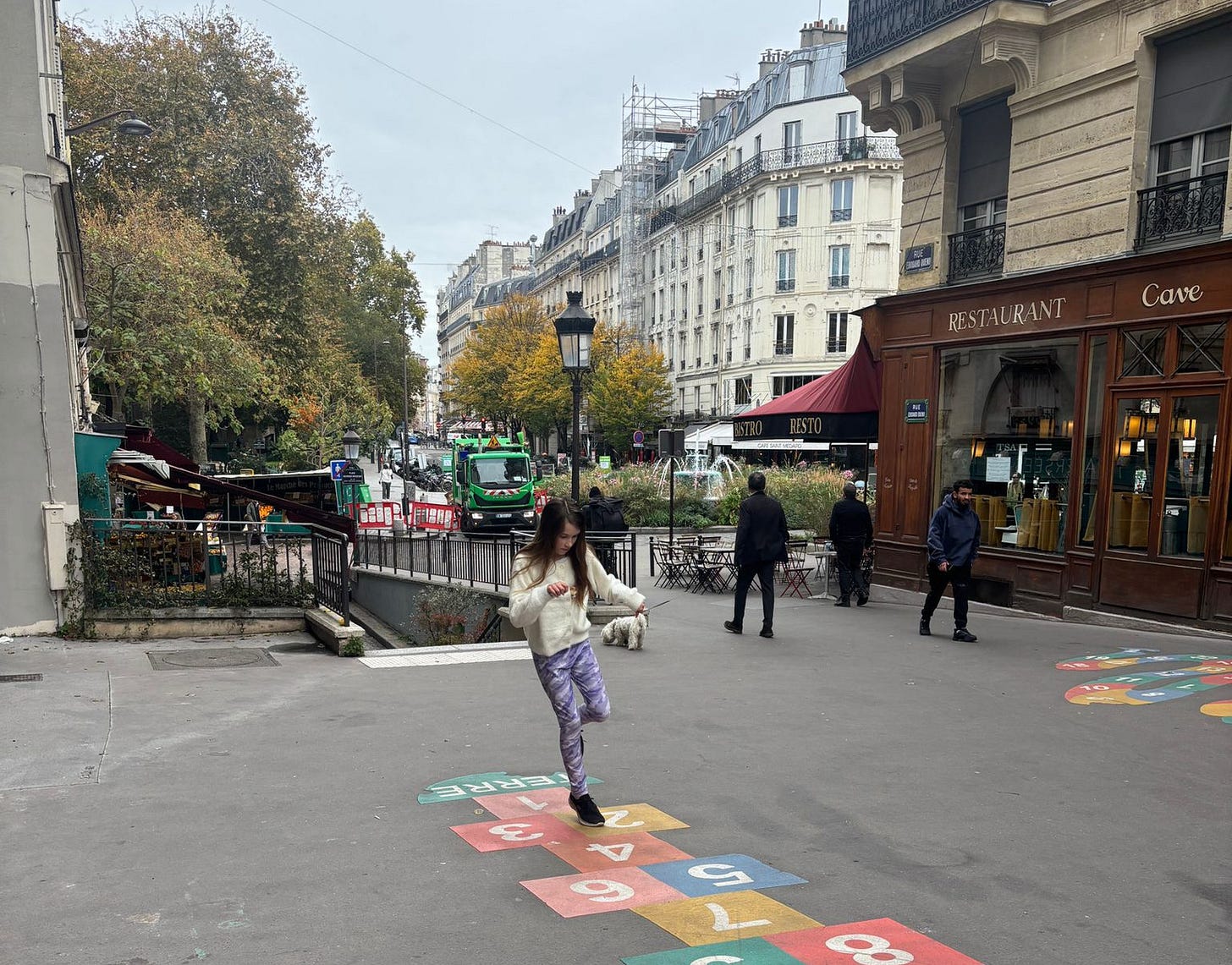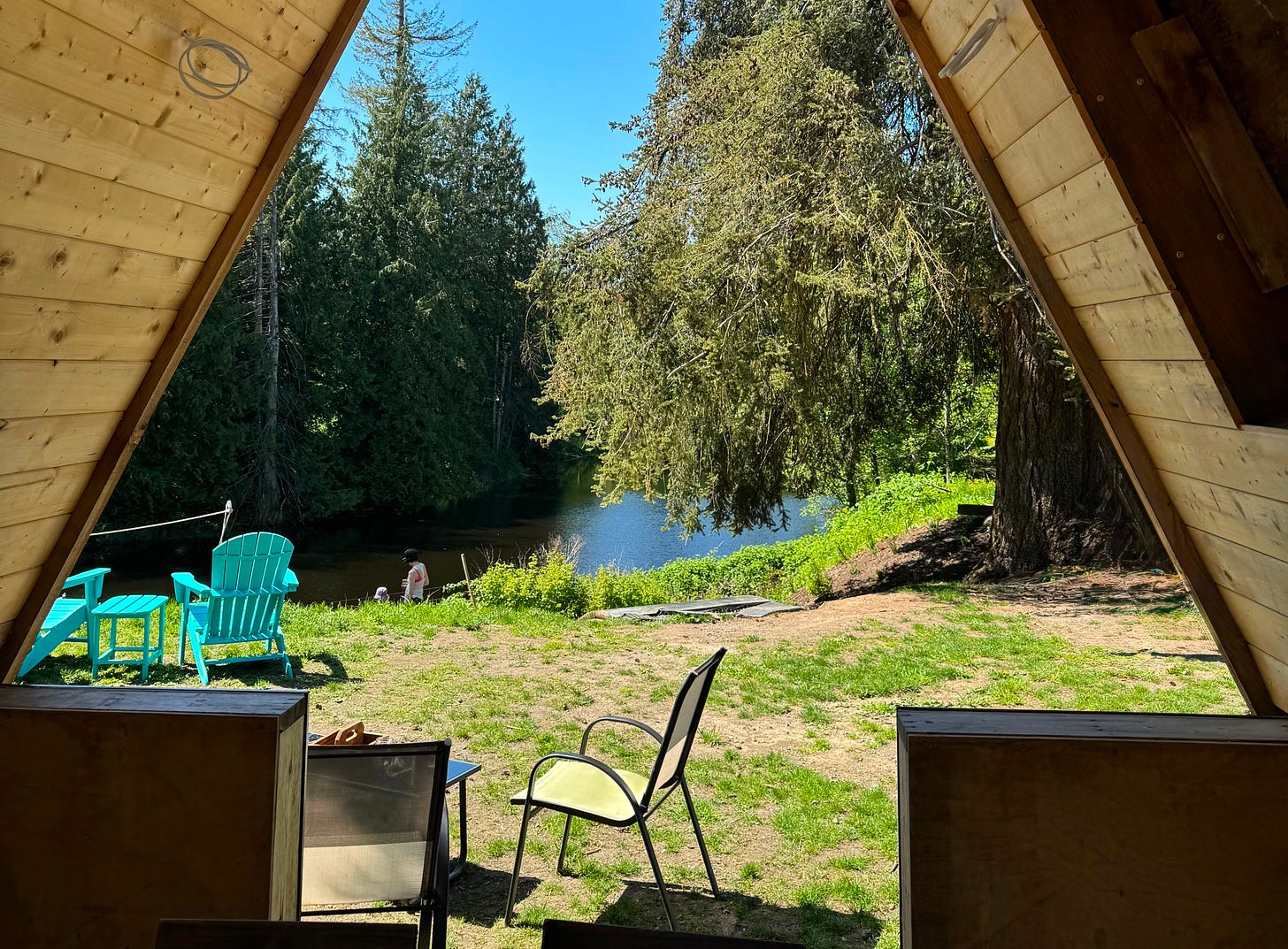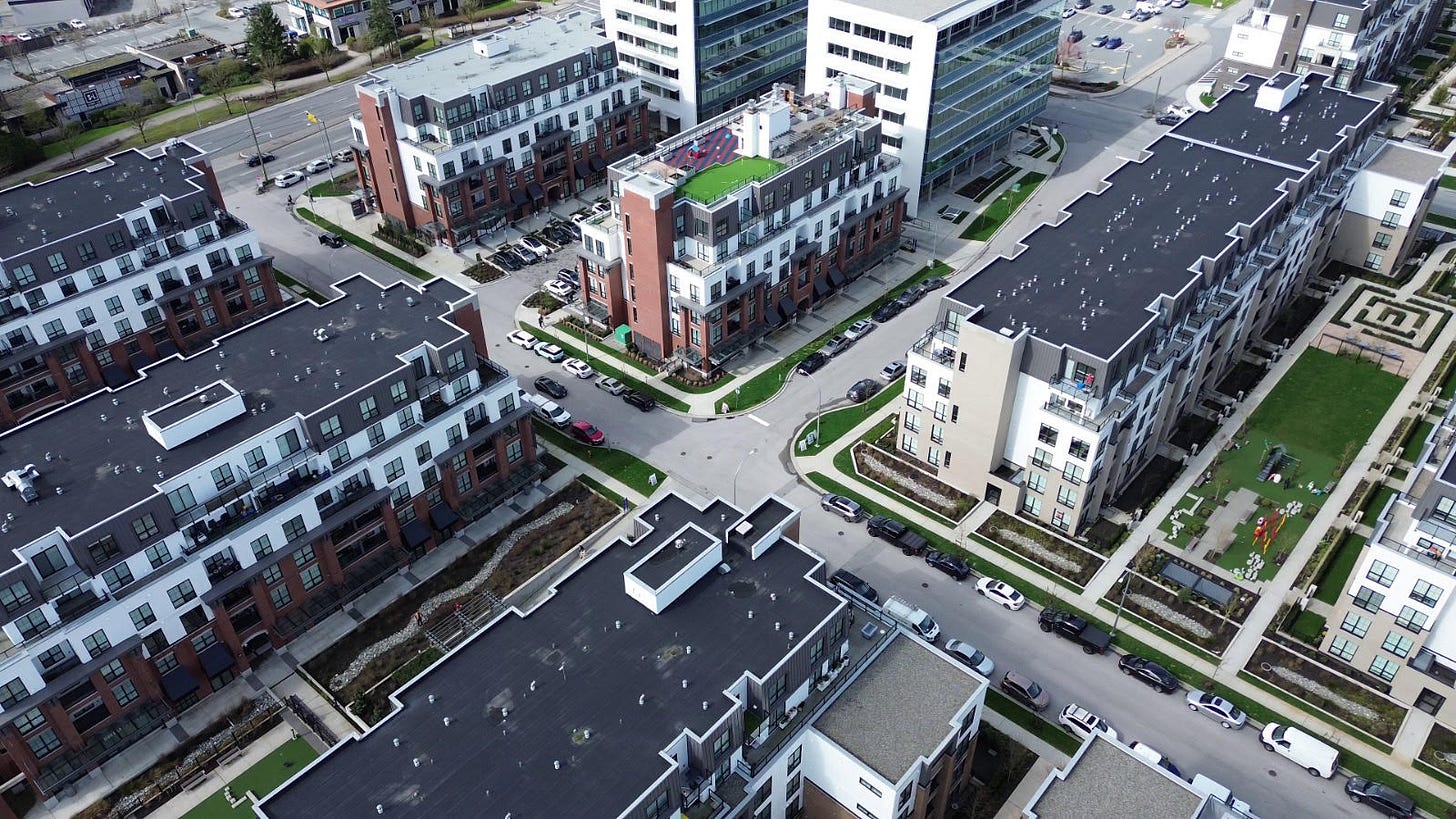We Build for Game Day, Not Every Day
Why Langley’s investments miss what families actually need
Across public squares all over Europe, early evenings fill with the sound of children racing across cobblestones, inventing games beneath café umbrellas, and darting between benches. Nearby, parents linger over coffees, glasses of wine, or leisurely dinners, half-watching, half-unwinding as the life of the square hums around them. It’s a familiar scene: the family outing, where kids get to play, explore, and simply be kids, while their parents finally get to relax.
Meanwhile, in Langley, parents can never quite exhale. They’re scanning for cars, checking blind spots, tracking every passing pickup, hovering at the edges of parking lots as if standing guard. Every time their child drifts more than fifteen feet away, a new calculation is made in an endless loop of vigilance that turns even a simple outing into a low-grade emergency.

This isn’t overprotective or “helicopter” parenting, it’s what our built environment demands from parents. While a public square helps add to children’s safety in Europe, our cafe patios all exist either inside parking lots or on the edge of busy roads. Langley doesn’t have many places where kids can be kids and parents can just… let them.
We’re Investing in Game Day but Ignoring Tuesday
The Township of Langley is spending big on youth facilities right now. The Smith Soccer Academy: $130 million. The 5-Rinks complex at LEC: another $150 million. These are state-of-the-art facilities, among the best-designed of their kind.
I asked Councillor Baillie a straightforward question about why 5 Rinks was prioritized when families in Willoughby, for example, would benefit more from a library or community center.
His answer reflected a broader assumption baked into municipal decision making. It focused on the design quality, construction cost savings from starting early, the efficiency of underground parking and stacking dry floors above ice sheets. He said this approach was “what is needed to deal with such a large youth population” and that these rinks “will serve many needs not just hockey.”

He’s not wrong about any of that. The facilities will be well-designed. They’ll serve lots of kids.
But notice what’s missing from that answer: any acknowledgment of what daily family life actually feels like in Langley.
Because here’s my real question: On a random Tuesday afternoon, where can I take my kid so he can run around while I sit down for 20 minutes without being in constant surveillance mode? Where in Langley can we go that doesn’t require me to scan for backing-up cars?
The Smith Academy and 5-Rinks will give us a few hours a week of scheduled, structured activity that requires driving to a centralized location. What they won’t give us is any relief from the other 160 hours of the week when we’re just trying to get through the day.
That disconnect between massive investment in youth sports infrastructure and zero investment in reducing daily parenting stress explains everything about why raising kids in Langley feels so exhausting.
The Shape of Daily Life Here
Think about the daily life of a Willoughby family, the places they go and what those places look like. The grocery store, a cafe, a restaurant, day care pickup, schools. All these places are on a sea of asphalt designed for optimal car throughput and abundant parking.
In these environments, children can’t roam even a little. Cars are everywhere moving fast and built on a scale that hides children completely. Parents are constantly on edge because the built environment prioritizes cars over the safety of our children.
Even in places meant to be walkable—like Willoughby Town Centre—there are no real barriers between kids and traffic. Drivers pull in and out of busy entrances without expecting children. Patios are hemmed in by parking stalls, and there’s nowhere small, safe, and interesting for kids to wander, explore and play.
A Very Specific Example of a Good Place in Langley
On the next nice day go have a beer at Locality Brewing and see what happens with the space they’ve created there. Parents sit at picnic tables having a beer while their kids run around the open area, running in circles, kicking a ball, playing on the slide, checking out the lagoon. No one is tense. No one is scanning for backing up SUVs. The environment does the hard work, not the parents.

This space works not because they spent hundreds of millions on designing it but because it’s one of the only places in Langley where parents aren’t forced into a hyper alert mode and can instead just enjoy themselves.
It’s a reminder that kids don’t need arenas to have fun, grow and develop. They need safe spaces scaled to their bodies and abilities. Parents don’t need more spaces for structured play, they need a break. Places like this should be everywhere.
Latimer Village is a Near Miss that Explains Everything
Latimer Village could have been Langley’s answer to the child-friendly European town square. The density is there, the retail shops are there even the branding of it being a village implies that we’re thinking about community but it still misses the mark.
The residential buildings have central green-space, but the mixed-use buildings with shops, the natural heart of community life where families and friends get together, have central parking lots instead.
The pedestrian-only section that actually invites wandering, play and exploration is tucked in the back, invisible from patios and storefronts where the parents sit.
The message the development sends is clear: eyes up, stay close, watch for cars and definitely don’t relax. Latimer Village isn’t a failure of ambition, it’s a symptom of how we default to cars first, people second. Even our walkable village is shaped by car logic.
Imagine if, instead, Latimer Village’s shops fronted a public square and playground. You could sit on Blacksmith’s patio having a latte while your kid played. It would also create a more inviting destination overall where people can spend more time. Business owners are often concerned about parking, but they should also consider “stay-time.”
Beneficial relationships can start to form between different adjacent businesses. Someone may want to do some shopping, or get a haircut, and then because they are spending more time in the area, they end up also having a coffee or getting food afterwards. The more inviting and nice the area is to be in, the more likely they are to stay for longer, especially if there are things for kids to do. Even indoor shopping malls understand these benefits.
Sadly, we don’t get that reality. Instead, we built Latimer Village for cars first and yet people still complain constantly about parking there! So what did we achieve by giving all this up for store-front parking?
Mega-Projects Aren’t the Answer
The Smith Academy and 5-Rinks aren’t bad facilities. They’ll be beautiful. Kids will learn teamwork and sportsmanship. Tournaments will come to town.
But they require families to:
Drive long distances to and from centralized locations
Navigate congested parking lots with one or more children
Register and pay for a scheduled and structured activity
This is the exact pattern that makes parenting in Langley so stressful, and we just spent $280 million reinforcing it.
We have built a system where youth recreation is highly structured, highly scheduled and car dependent while unstructured daily childhood play has nowhere to exist.
Instead of building everything in two massive complexes, these projects could have been spread throughout the community. These could be smaller facilities families could walk or bike to for a game, with the remaining budget invested in the neighbourhood spaces where daily life actually happens.
The Opportunity Cost
It’s not just the $280 million. It’s the opportunity cost of what we didn’t build.
For the price of 5-Rinks alone, we could have built three community centres like Surrey’s Clayton Centre spread across Willoughby, Willowbrook and Fort Langley. Each would be walkable for thousands of families. We’d still have tens of millions left over for:
Plazas with car-free edges where kids can roam
Neighbourhood parks within a 10-minute walk of every home
Traffic-calmed streets that kids can ride bikes and play street hockey safely on
Patios that face play areas instead of exhaust-filled parking lots
These things don’t cost hundreds of millions but we’re not building them because we spent that money centralizing sports instead of distributing access to safe, unstructured play space.
Worse these developments create a negative feedback loop:
Mega projects force parents to drive further
We spend more on parking lots and roads
More car infrastructure leads to less safe neighbourhoods
Less safe place creates more demand for centralized mega projects
More centralized projects leads to more driving
We’re not only missing an opportunity, we’re actively making it more difficult to solve the real problems Langley families are facing.
Conclusion: A Town Built for Families
Langley is full of young families and school enrollment shows that we are only attracting more and more young families. We’ve built a landscape where raising kids requires constant vigilance. This isn’t a cultural issue, it’s a design issue.
Examples like Locality, Gasoline Alley and McBurney Plaza show places where parents can exhale and relax a little bit. Latimer Village shows how close we are to getting it right but these sports complexes show how much we’re still spending on the wrong problem.
If we want to support families, the simplest and most powerful thing we can do is build environments where kids can play and parents don’t have to hover.
A family friendly city isn’t one with the best soccer academy or the shiniest hockey rinks, it’s the one where parents can finish a cup of coffee while their kids play within sight. We had $280 million to invest in Langley’s children. Instead of investing in the everyday spaces that make daily life easier and more joyful, we went for the spectacle and in the process, left childhood and parents on the sidelines.
Strong Towns Langley is a community group dedicated to making Langley, British Columbia a better place. We advocate for incremental development, sustainable transportation solutions, housing accessibility, public spaces, and responsible growth strategies. Our group is part of the larger Strong Towns movement, focusing on creating financially resilient and people-oriented communities.
To learn more visit https://strongtownslangley.org


